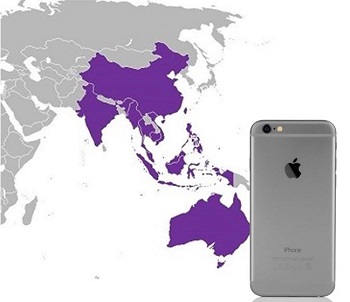Nearly 35 percent of smartphone owners will update their handsets this year, regardless of current device function.
In Australia, the Deloitte mobile customer survey has revealed that regardless of whether or not the current mobile technology is still fully functional, 35 percent of smartphone owners will be updating their handsets at some point this year.
Nearly half of all mobile phone owners will be holding onto their current devices instead of trading them in or selling.
That said, when it comes to the same mobile technology survey, it appears that many Australians are hanging onto their old devices when they’re not using them anymore. While 48 percent plan to keep their current smartphones and continue using them, this year, 27 percent will give them away to someone else who can use them. Another 15 percent will recycle their old devices and 8 percent will sell them. Two percent plan to replace their devices because they have gone missing.
With only 15 percent selling their devices after they don’t need them, Australians are skipping an opportunity to make money.
 When comparing this trend to the rest of the world, it is Singapore that is the region with the largest number of people who sell their old device models. Among them, 26 percent have done so. In second place is the United Kingdom, where 21 percent of device owners will be selling their gadgets when they replace them. Japan is not far behind, with 20 percent taking part in this online selling opportunity. In Germany, 16 percent will do so. Australia is ahead of only Canada, where only 13 percent of consumers will sell their used devices when they purchase new ones this year.
When comparing this trend to the rest of the world, it is Singapore that is the region with the largest number of people who sell their old device models. Among them, 26 percent have done so. In second place is the United Kingdom, where 21 percent of device owners will be selling their gadgets when they replace them. Japan is not far behind, with 20 percent taking part in this online selling opportunity. In Germany, 16 percent will do so. Australia is ahead of only Canada, where only 13 percent of consumers will sell their used devices when they purchase new ones this year.
According to Jeremy Drumm, the lead author of the Deloitte report, a surprisingly large number of Australians simply tuck their older smartphone models into a drawer when they replace them. The majority do so in order to make sure they have a replacement quickly available if anything should happen to their newer model.
That said, this means that the mobile technology isn’t benefiting a friend or family member and it is not being sold in order to make a bit of money and provide someone else with an affordable device. This trend suggests that there is a considerable amount of waste being generated by the current device replacement habits in the country.

 While Apple Pay will be coming to new markets, Apple has been experiencing some pushback from financial institutions in several markets. Banks, in particular, are unsure of the value of Apple Pay, largely due to the other payment services that exist. Some of these banks have their own mobile payments platforms and see Apple Pay as something that will have only moderate appeal to consumers.
While Apple Pay will be coming to new markets, Apple has been experiencing some pushback from financial institutions in several markets. Banks, in particular, are unsure of the value of Apple Pay, largely due to the other payment services that exist. Some of these banks have their own mobile payments platforms and see Apple Pay as something that will have only moderate appeal to consumers.